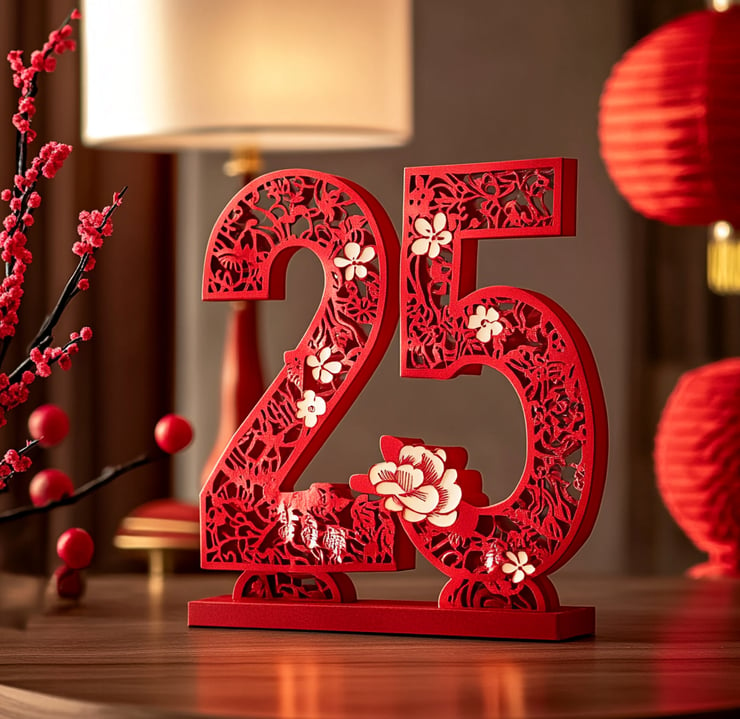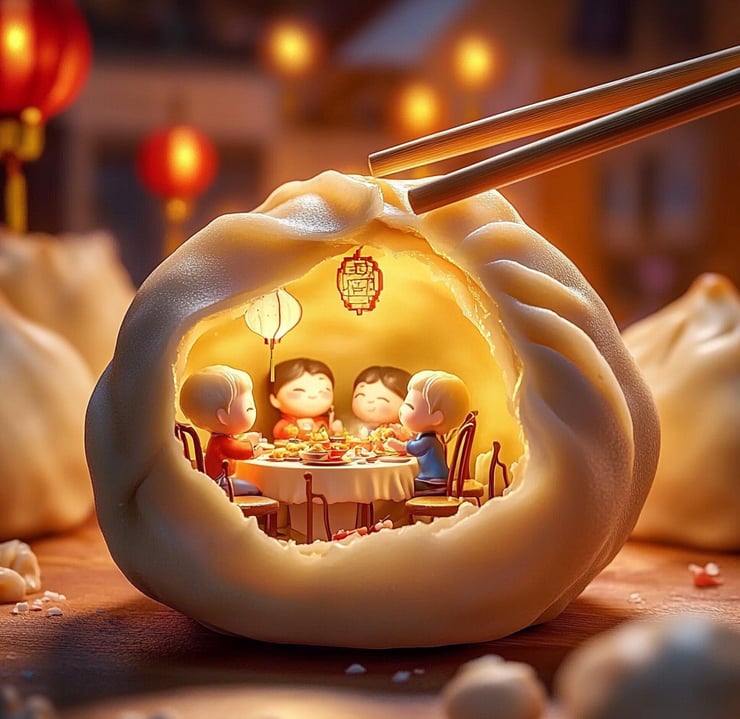Chinese New Year 2025: Your Complete Spring Festival Guide
Your essential Chinese New Year 2025 guide to traditions and celebrations. From family reunions to digital red packets, discover how ancient customs thrive in modern China's Spring Festival.
Crystal Zhao
1/26/20255 min read


In December 2024, Spring Festival (Chinese New Year) was inscribed on UNESCO's List of Intangible Cultural Heritage, marking 2025 as its first heritage-listed celebration. Let's explore the ten essential elements that make this millennia-old festival uniquely Chinese.
New Year Shopping: Traditions Meet Modern Times
The pre-festival shopping rush carries deep cultural significance, symbolizing hopes for abundance in the coming year. From traditional preserved foods to imported delicacies, New Year goods reflect changing times. The 2025 online shopping festival featured 400 events, with sales exceeding £70 billion, yet many still prefer traditional market visits for that authentic festival atmosphere.
Cultural Insight: Despite modern conveniences and overflowing supermarkets, the ritual of New Year shopping endures. Some stick to traditional markets, others embrace online shopping or livestream sales—different paths to the same cherished tradition.
The Great Migration: "Home for New Year, Rich or Poor"
This spectacular migration sees billions journeying home for family reunion. In 2024, travelers made 9 billion trips—equivalent to 6.4 times China's population. Whether by car (80% of travelers), train, plane, or ferry, everyone follows the age-old wisdom: "Rich or poor, home for New Year" (有钱没钱,回家过年).
Cultural Insight: While younger generations increasingly invite parents to celebrate in cities, a newer trend known as "reverse reunion," major cities like Beijing and Shanghai still experience an unusual quietness during the festival. Streets normally bustling with activity fall silent, offering a rare peaceful atmosphere that locals cherish.
Spring Festival Decorations: Red Couplets and the Lucky Character
Spring Festival transforms homes with traditional red decorations, most notably the 'Fu' character (meaning 'good fortune') and paired poetic verses called spring couplets. A charming tradition involves displaying the 'Fu' character upside down. This clever custom plays on Chinese pronunciation - when someone says "the Fu is upside down," it sounds exactly like "good fortune has arrived." This wordplay dates back to the Ming Dynasty, when an emperor discovered a household's upside-down Fu and was delighted by this creative interpretation.
Cultural Insight: Like many New Year traditions, hanging decorations follows specific rules. Fresh couplets must replace old ones completely - overlapping them is considered unlucky. In some regions, families wait until the next year's festival to remove their old couplets, seeing this as a proper farewell to the previous year's blessings.
The Reunion Feast: A Taste of Chinese Family Traditions
The New Year's Eve dinner is the most important meal of the year, where every dish carries meaning. Northern families traditionally make dumplings, their crescent shape resembling ancient Chinese gold ingots - a wish for prosperity. Southern families often enjoy round rice balls in sweet soup, their shape symbolizing family completeness and reunion. Each region adds its specialties: Shanghai's "Eight Treasures Rice" studded with dried fruits and nuts, Sichuan's savory preserved sausages, and Hong Kong's impressive "basin feast" - a multi-layered celebration of abundance.
Cultural Insight: One particularly meaningful tradition is serving a whole fish at dinner. The connection? In Chinese, the word for "fish" sounds exactly like the word for "surplus" or "abundance." Families often save half the fish for the next day, expressing the wish to have prosperity throughout the year - from its beginning to its end. This explains why you might visit a Chinese home during New Year and find an uneaten fish on the table!
China Media Group Spring Festival Gala: 40 Years of China's Biggest TV Event
Since 1983, this variety show has become China's most-watched annual event. The 2024 gala broke records with 679 million viewers, featuring everything from traditional opera to modern pop. It's where the nation counts down to midnight together.
Cultural Insight: Early comedy sketches heavily featured northern dialects and humor styles, often leaving southern viewers puzzled. Today's show embraces China's cultural diversity, reflecting how traditions evolve with time.
The Night Watch: Staying Up to Welcome the New Year
The custom of staying up all night on New Year's Eve has been practiced in China for over 1,700 years. What started as families gathering around the hearth to share stories and ward off a mythical beast has evolved dramatically. Today's families might combine watching the TV gala with playing on smartphones or sending digital red packets, yet the core tradition of staying awake together remains unchanged.
Cultural Insight: Northern families often prepare special "year-crossing dumplings" after midnight. The tradition includes hiding lucky coins or sweets inside - finding one promises good fortune for the coming year. It's common to see families gathered around the table at 1 AM, sleepy but happy, searching their dumplings for these hidden treasures.
Red Packets: Traditional Blessing Goes Digital
Originally paper envelopes with money to ward off evil spirits, red packets (红包, hóngbāo) have entered the digital age. During New Year's Eve 2024, Chinese users received 5.08 billion digital red packets via WeChat, with the peak happening in the magical first minute of the new year - a moment when millions of people sent their New Year wishes through virtual gifts.
Cultural Insight: Regional customs show fascinating variety. While northern red packets tend to be more generous, Guangdong's tradition lets unmarried adults receive rather than give - a unique twist that locals cherish.
Fireworks: Balancing Tradition with Environment
Lighting firecrackers during Spring Festival has been a cherished tradition for over a millennium. Though it began as a way to ward off the mythical beast "Nian," it later evolved into an essential celebration ritual symbolising the driving away of bad luck and welcoming of good fortune. In 2014, environmental concerns led many cities to ban fireworks. This sparked heated debates, with many arguing that "banning fireworks during Spring Festival is like having Christmas without a tree." Since 2023, cities have begun replacing outright bans with controlled use, striking a balance between cultural heritage and environmental protection.
Cultural Insight: China's firework artistry centers around four regions, with Liuyang producing 70% of global firework exports. Local craftsmen there have a poetic name for their creations - "the most beautiful love letters to the sky," reflecting how these spectacular displays have become an art form that brightens the new year celebrations.
Temple Fairs: Ancient Markets Meet Modern Fun
Originally religious gatherings, temple fairs have evolved into vibrant festivals combining food, entertainment, and shopping. Beijing's Temple of Earth and Shanghai's City God Temple fairs draw huge crowds seeking both traditional crafts and modern entertainment.
Cultural Insight: While you can still find traditional sugar painting and dough figurines, modern fairs now include VR experiences and tech shows. As old Beijing locals say, "No temple fair visit, no real New Year".
Year of the Snake 2025: Zodiac Traditions Live On
The Chinese zodiac originated from a legendary race where twelve animals earned their calendar positions. 2025 welcomes the Snake year, symbolising wisdom and vitality in Chinese culture.
Cultural Insight: During one's zodiac year, wearing red accessories is believed to ward off bad luck. This tradition reflects the Chinese belief in the color red's protective powers against misfortune.


Epilogue
Spring Festival bridges past and present, remaining constant amid changing times. Whether watching a livestream shopping event or making dumplings with grandparents, each tradition carries the warmth of family reunion and hopes for prosperity. These ten elements show how Chinese New Year adapts while keeping its soul - a celebration that brings families together across any distance.
Updated for the 2025 Spring Festival with current trends and timeless traditions.
